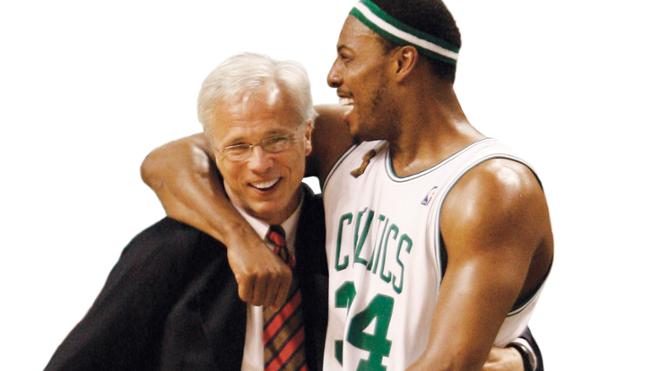Alumni, Portrait
Coaching a new team
After the Boston Celtics won the 2008 NBA Championship, assistant coach Kevin Eastman, R’77, received a request to address a group of business executives.
“Someone just called me up out of the blue and said, ‘Do you think you can help us with applying what you guys did to win a championship to what we do in the corporate world, to become successful, and have great fiscal years every year?’” Eastman said. “Two things happened, luckily both of them good. They really liked it, and so did I. And what I started to understand that day is, ‘Wow, you have an opportunity here to impact more people than just those that are on a team.’”
 Eastman is a basketball lifer, spanning from his playing days at Richmond and a short-lived professional playing career to his tenure as a college assistant coach, head coach, and athletic director; a well-respected NBA assistant coach; and most recently, vice president of basketball operations for the L.A. Clippers, a management position. And as the Kevin Eastman Award — given to Spider men’s basketball players with standout leadership qualities and work ethic — suggests, he’s not one to shy away from a challenge.
Eastman is a basketball lifer, spanning from his playing days at Richmond and a short-lived professional playing career to his tenure as a college assistant coach, head coach, and athletic director; a well-respected NBA assistant coach; and most recently, vice president of basketball operations for the L.A. Clippers, a management position. And as the Kevin Eastman Award — given to Spider men’s basketball players with standout leadership qualities and work ethic — suggests, he’s not one to shy away from a challenge.
Eastman quickly developed a passion for his new vocation. At first, he limited his appearances to the NBA’s offseason, but since his retirement from basketball in the summer of 2016, the Richmond-area resident estimates he’s had more than 150 speaking engagements worldwide — about 70 percent corporate, 30 percent sports-related.
“When you’re coaching a team, it’s 15 people that you can impact on a daily basis,” he said. “Here, even though you’re only going in on a one-time shot, you have an opportunity to impact many, many more people, and as you do it over the years, tremendously more people.”
Eastman is now spreading his gospel to a wider audience with a new book, Why The Best Are The Best: 25 Powerful Words That Impact, Inspire, and Define Champions. More information about him and the book are available at kevineastman.net.
“I strongly believe there’s more inside each of us, and sometimes we just don’t know how to get it out,” he said. “So many people are on that continuous daily treadmill that they really haven’t had time to sit down, slow down, and try to figure out where they want to go.
“The intent [of the book] was really to help people get to where they want to go and become who they want to become in life, in their jobs, in their careers. And that goes for coaches, that goes for corporate leaders, and that goes for sports and corporate teams,” he continued. “It’ll challenge them to become their best and give them ideas and strategies and mechanisms on how to get there.”
